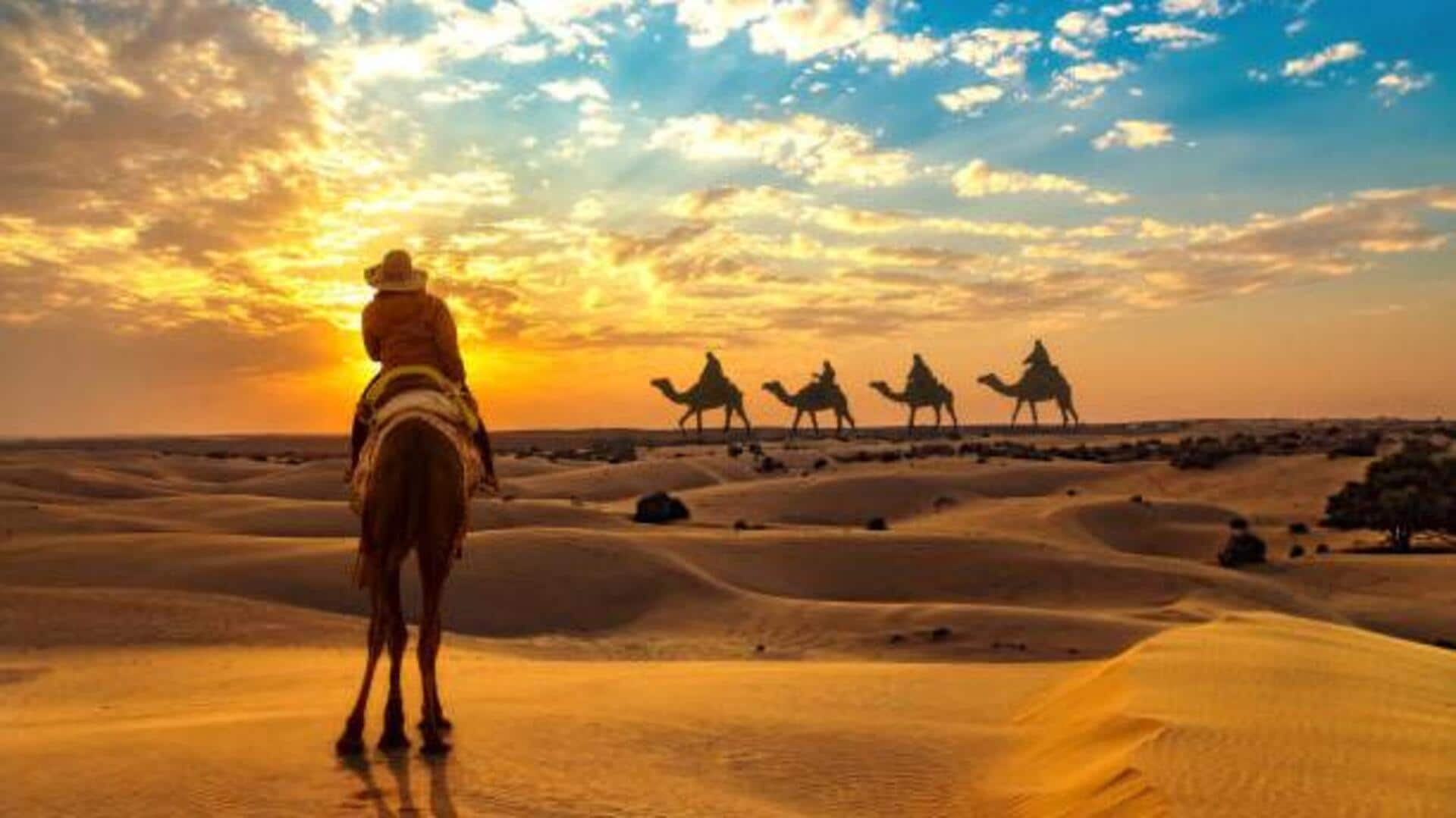
Camelback adventures: The best way to explore deserts
What's the story
African deserts offer some of the most unique camelback adventures, allowing explorers to traverse vast, sandy terrains in a traditional manner. These expeditions let you experience the beauty of the desert, while also learning about its culture and history. From the Sahara to the Namib, each desert has its own challenges and rewards, making it an unforgettable journey for adventurers.
#1
Exploring the Sahara Desert
The Sahara Desert, the largest hot desert in the world, provides an expansive landscape to explore on camelback. Spanning over 9 million square kilometers, it offers endless dunes and unique geological formations. Adventurers can witness stunning sunsets over golden sands and encounter diverse wildlife adapted to this harsh environment. The Sahara's vastness allows for extended journeys that test endurance and provide a deep connection with nature.
#2
Discovering Namibia's Namib desert
The Namib Desert in Namibia is one of the oldest deserts on the planet. Famous for its towering red dunes and stark landscapes, it makes for an ideal setting for camelback adventures. The desert's unique topography offers challenges such as steep dunes and rocky terrain, making it an exciting destination for seasoned adventurers. Explorers can also visit ancient rock engravings and learn about the indigenous cultures that have thrived here.
#3
Traversing Egypt's White Desert
Egypt's White Desert is famous for its surreal chalk formations that resemble sculptures in a snowy expanse. This unique setting makes for an extraordinary backdrop for camelback exploration. The White Desert is located near Farafra Oasis, where travelers can enjoy guided tours through otherworldly landscapes dotted with natural wonders. The region's cool nights provide a perfect opportunity to stargaze under clear skies.
Tip 1
Tips for planning your adventure
When planning a camelback adventure in Africa's deserts, consider factors like weather conditions, required permits, and local guides' availability. Pack essential gear such as appropriate clothing, sunscreen, water purification tablets, and navigation tools like maps or GPS devices to ensure safety during your journey.